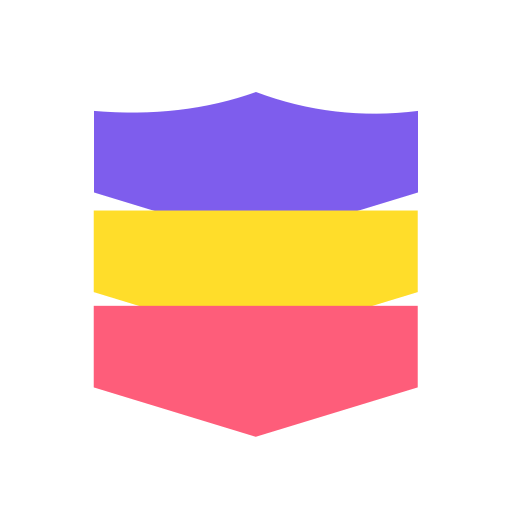snapchat on a chromebook
Snapchat on a Chromebook : Unlocking the Full Potential
Snapchat, the popular multimedia messaging app, has taken the world by storm since its launch in 2011. With its unique features like disappearing photos and videos, filters, and interactive lenses, Snapchat has become a favorite among smartphone users. However, many people wonder if it is possible to use Snapchat on a Chromebook, a laptop that runs on Google’s Chrome OS. In this article, we will explore the compatibility of Snapchat with Chromebooks and discuss various methods to access Snapchat on these devices.
To understand if Snapchat works on Chromebooks, we need to delve into the technical aspects. Chromebooks, unlike traditional laptops, do not run on Windows or macOS but instead operate on Google’s Chrome OS, a lightweight and web-centric operating system. This means that Chromebooks primarily rely on web applications and extensions, making it challenging to install traditional desktop applications like Snapchat.
Officially, Snapchat does not have a dedicated app for Chrome OS. The app is primarily developed for iOS and Android devices and is available for download from the respective app stores. However, this does not mean that Chromebook users are entirely out of luck when it comes to using Snapchat.
One of the methods to access Snapchat on a Chromebook is through the Snapchat website. Chromebooks have excellent web browsing capabilities, and users can access most websites, including Snapchat’s official website, through the Chrome browser. By visiting snap.com on a Chromebook, users can log in to their Snapchat accounts and use the web version of the app.
While the web version of Snapchat provides limited functionality compared to the mobile app, it still allows users to send and receive snaps, view stories, and chat with friends. However, features like augmented reality lenses, filters, and the Discover section are not available on the web version. Despite these limitations, the web version of Snapchat can be a viable option for Chromebook users who want to stay connected with their friends on the platform.
Another method to access Snapchat on a Chromebook is through the use of Android app support. In recent years, Google has introduced the ability to run Android apps on select Chromebooks, significantly expanding the functionality of these devices. To check if your Chromebook supports Android app installation, navigate to the Settings menu, click on “Apps,” and look for the option to enable Android app support.
If your Chromebook supports Android apps, you can download the Snapchat app from the Google Play Store and install it on your device. Once installed, you can log in to your Snapchat account and access all the features available on the mobile app. This method provides a more seamless Snapchat experience on a Chromebook, as it offers access to all the features and functionalities available on the mobile app.
However, it is crucial to note that not all Chromebooks support Android app installation. Older or lower-end models may not have the necessary hardware or software capabilities to run Android apps. Therefore, it is essential to verify the compatibility of your Chromebook before attempting to install Snapchat through this method.
For Chromebook users who do not have access to Android app support, there is still one more option to consider. Several third-party Android app emulators are available that allow users to run Android apps on their Chromebooks. These emulators create a virtual Android environment within the Chrome OS and enable users to install and use Android apps that are not officially supported on their devices.
One popular Android app emulator for Chromebooks is ARC Welder. ARC Welder is a Chrome app that allows users to run Android apps within the Chrome browser. By installing ARC Welder from the Chrome Web Store, users can import the Snapchat APK file and launch it within the emulator. This method provides a workaround for Chromebook users who want to use Snapchat but do not have access to Android app support.
While using an Android app emulator can be a viable option, it is important to note that these emulators may not offer the same level of performance and stability as native Android app support. Users may encounter occasional lags, crashes, or compatibility issues when running Snapchat through an emulator. Additionally, keeping the emulator and its associated apps up to date can be a cumbersome task.
In conclusion, although Snapchat does not have an official app for Chrome OS, there are several methods available to access Snapchat on a Chromebook. Users can use the web version of Snapchat through the Chrome browser, utilize Android app support if available on their Chromebook, or employ third-party Android app emulators. Each method has its own set of advantages and limitations, and users should choose the one that best fits their requirements.
Whether you are a student, professional, or simply someone who enjoys staying connected with friends and sharing moments through Snapchat, having access to the app on your Chromebook can enhance your overall experience. So go ahead and unlock the full potential of your Chromebook by exploring these methods to use Snapchat on your device. Happy snapping!
microsoft released outofband update patch issues
Microsoft Releases Out-of-Band Update Patch: Addressing Issues and Enhancing Security
In the ever-evolving world of technology, software updates are a crucial component of ensuring the stability, security, and functionality of various systems and applications. One of the leading technology giants, Microsoft, regularly releases updates to its products to address vulnerabilities, fix bugs, and introduce new features. However, sometimes certain critical issues arise that need immediate attention, prompting Microsoft to release an out-of-band update patch. In this article, we will delve into the concept of out-of-band updates, the reasons behind their release, and the impact they have on the security landscape.
An out-of-band update patch, also known as an out-of-cycle update, is a software update released outside of the regular update cycle. Typically, technology companies like Microsoft follow a predetermined schedule for releasing updates to their software products. These updates are bundled together and released on a fixed date, commonly referred to as “Patch Tuesday.” However, in certain situations, an urgent update is required to address critical security vulnerabilities or fix severe issues that cannot wait until the next scheduled update.
The release of an out-of-band update patch is not a common occurrence and is usually reserved for critical situations that pose a significant risk to users’ systems or data. These patches are intended to provide immediate relief and ensure that users are protected from any potential threats or exploits. Microsoft, being one of the prominent players in the software industry, has been known to issue out-of-band updates when necessary.
One such instance of Microsoft releasing an out-of-band update patch was the infamous “WannaCry” ransomware attack in 2017. This attack exploited a vulnerability in Microsoft’s Windows operating system, affecting thousands of computers worldwide. In response to the severity of the situation, Microsoft released an emergency out-of-band update patch to address the vulnerability and protect its users from further attacks. This incident highlighted the importance of timely updates and the need for out-of-band patches to mitigate security risks promptly.
There are several reasons why technology companies, including Microsoft, choose to release out-of-band update patches. The most common reason is the discovery of a critical security vulnerability that poses an immediate threat to users’ systems or data. These vulnerabilities are often exploited by cybercriminals to gain unauthorized access or launch malicious attacks. By releasing an out-of-band patch, companies can quickly address the vulnerability and prevent any potential damage.
Another reason for releasing an out-of-band update patch is to fix severe bugs or issues that significantly impact the functionality or stability of a software product. These bugs can cause crashes, data corruption, or other undesirable consequences. By swiftly releasing a patch, companies can minimize the disruption caused by these issues and provide users with a more reliable and efficient experience.
In addition to addressing vulnerabilities and bugs, out-of-band update patches may also introduce new features or enhancements to existing software products. While the primary focus of these patches is to address urgent issues, companies may take the opportunity to include additional improvements, further enhancing the user experience and overall performance of the product.
When a company like Microsoft releases an out-of-band update patch, it is crucial for users to apply the patch as soon as possible. These patches are specifically designed to address critical issues and improve security, making them essential for maintaining a secure computing environment. Neglecting to apply the patch can leave systems vulnerable to attacks and exploits, as cybercriminals are quick to exploit known vulnerabilities.
To ensure users stay informed about out-of-band update patches, Microsoft employs various communication channels. These include official announcements on their website, blog posts, emails to registered users, and notifications within the software itself. By leveraging these channels, Microsoft can reach a wide audience and provide necessary guidance on applying the patches.
In recent years, the security landscape has become increasingly complex, with cyber threats becoming more sophisticated and pervasive. In response to this evolving threat landscape, Microsoft has adopted a proactive approach to security. This includes investing in ongoing research and development, collaborating with security researchers and experts, and maintaining a dedicated team to identify and address vulnerabilities promptly. The release of out-of-band update patches is just one aspect of Microsoft’s comprehensive security strategy.
In conclusion, out-of-band update patches play a vital role in maintaining the security and stability of software products. When critical vulnerabilities or severe issues arise, companies like Microsoft release these patches to address the problems promptly. By applying these patches, users can protect their systems and data from potential threats and ensure a more reliable computing experience. It is essential for users to stay informed about these patches and apply them as soon as possible to benefit from the enhanced security measures and improvements they offer.
youtube playlist settings
YouTube Playlist Settings: A Comprehensive Guide for Content Creators
Introduction:
YouTube has become the go-to platform for sharing and consuming video content. With millions of users uploading and watching videos every day, it’s essential for content creators to optimize their channels and playlists for maximum visibility and engagement. In this article, we will explore the various settings available for YouTube playlists and how creators can utilize them to enhance their content and reach a wider audience.



1. Understanding YouTube Playlists:
Before diving into the playlist settings, let’s first understand what playlists are and why they are crucial for content creators. YouTube playlists allow creators to organize their videos into specific categories or themes. Playlists can be curated based on topics, series, or even user preferences, providing viewers with a seamless viewing experience. By utilizing playlists effectively, creators can increase watch time, improve discoverability, and encourage viewers to stay longer on their channels.
2. Creating a Playlist:
To create a playlist, simply navigate to your YouTube Studio dashboard and click on the “Playlists” tab. From there, click on the “New Playlist” button, give your playlist a name, and choose whether you want it to be public, private, or unlisted. It’s important to note that public playlists are visible to anyone, while private and unlisted playlists have restricted access.
3. Customizing Playlist Settings:
Once you’ve created a playlist, it’s time to customize its settings to optimize its performance. By clicking on the three dots next to your playlist’s title, you can access the playlist settings. Here, you can modify the playlist title, description, and choose a thumbnail that represents the playlist’s content. It’s crucial to use compelling titles and descriptions that accurately reflect the playlist’s theme, as it helps viewers understand what to expect from the playlist.
4. Organizing Videos in a Playlist:
An essential aspect of playlist settings is the ability to determine the order in which videos appear. By default, videos are added to a playlist in the order they were uploaded, but creators have the flexibility to rearrange the videos to create a more cohesive viewing experience. Simply click on the “Playlist Settings” tab, choose the “Manual” option under “Play Order,” and drag and drop the videos into your desired order.
5. Collaborative Playlists:
Another exciting feature offered by YouTube playlist settings is the ability to create collaborative playlists. This allows multiple creators to contribute videos to a shared playlist, fostering collaboration and cross-promotion. To enable this feature, navigate to the playlist settings, click on the “Collaborate” tab, and choose the option that allows others to add videos to your playlist. This feature can be particularly useful for collaborations, guest appearances, or showcasing community-contributed content.
6. Playlist Privacy Settings:
Privacy settings play a crucial role in determining who can access and view your playlists. As mentioned earlier, playlists can be public, private, or unlisted. Public playlists are visible to anyone and can appear in search results and recommendations. Private playlists, on the other hand, are only accessible to the creator and selected users. Unlisted playlists are not visible in search results, but anyone with the link can access them. Creators should carefully consider their privacy settings based on their content and target audience.
7. Playlist Visibility and Distribution:
While privacy settings determine who can view playlists, visibility and distribution settings determine where they can be discovered. By default, playlists are visible on your channel’s homepage, encouraging viewers to explore related content. Creators can also choose to feature their playlists in the “Featured Playlists” section, making them more prominent. Additionally, playlist visibility can be restricted to specific countries or regions, allowing creators to target localized audiences.
8. Playlist Settings for Monetization:
For content creators looking to monetize their videos, playlist settings offer several options to maximize revenue. By enabling the “Enable Ads to be Displayed” option, creators can display ads on their playlists, generating additional income. Additionally, creators can choose to enable or disable specific types of ads, such as display ads, overlay ads, or skippable video ads. It’s important to strike a balance between monetization and user experience to ensure viewers stay engaged.
9. Analytics and Insights:
To track the performance of your playlists, YouTube provides detailed analytics and insights. Creators can access metrics such as watch time, views, and engagement for each playlist, allowing them to identify popular content and make informed decisions. By analyzing these metrics, creators can optimize their playlists by adding more videos on popular topics or removing underperforming ones, ultimately improving viewer satisfaction and channel growth.
10. Optimization for Search and Recommendations:
Finally, playlist settings offer opportunities for optimizing your playlists for search and recommendations. By adding relevant tags and keywords to your playlist title and description, you increase the chances of your playlist appearing in search results. Similarly, YouTube’s recommendation algorithm takes into account the relevance and quality of playlists when suggesting content to users. By ensuring your playlists are well-optimized, you can increase the visibility and reach of your videos.



Conclusion:
YouTube playlist settings provide content creators with a wide range of customization options to enhance their channels and engage their audience effectively. By utilizing features such as customizing playlist settings, organizing videos, enabling collaboration, optimizing privacy and visibility, and leveraging monetization options, creators can create an immersive viewing experience and maximize their reach. Additionally, tracking analytics and optimizing playlists for search and recommendations allows creators to refine their content strategy and achieve long-term success on the platform. So, take advantage of these playlist settings and unlock the full potential of your YouTube channel.
